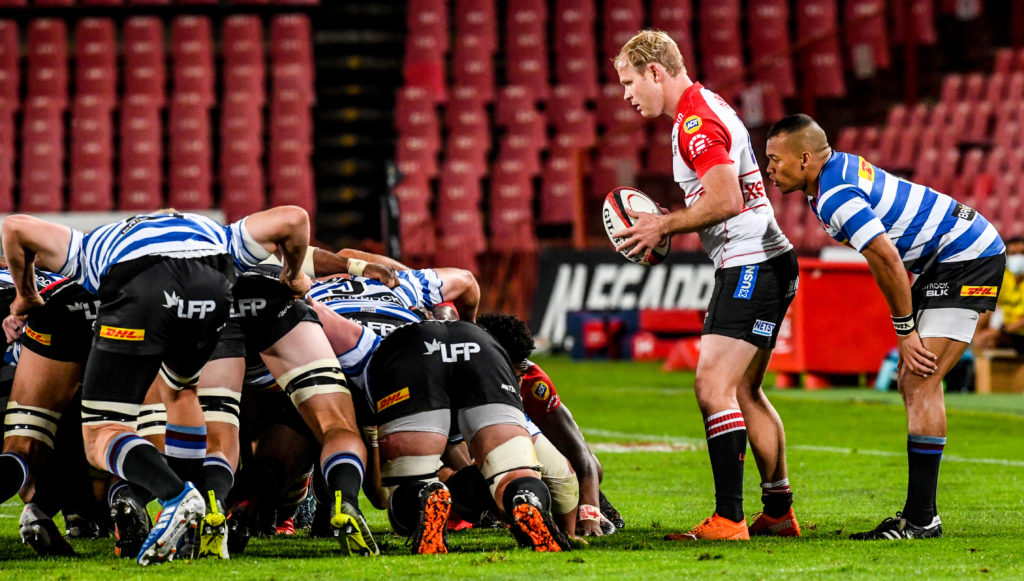From scrum resets to TMO checks, drinks breaks and injuries – rugby is rife with stoppages. While one way to increase the appeal of the game is to reduce this ‘dead time’, we should also look to use it better, writes ANDRE-PIERRE CRONJE.
Last week SuperSport pundits and ex-Bok coaches Nick Mallett and Swys de Bruin were vocal in their concern for the state of the game in South Africa. Both spoke about the dwindling ‘quality’ of the product on offer and cited among their concerns a very low ball-in-play time.
Super Rugby Unlocked and Currie Cup games this season are averaging a purported 25 minutes of ‘actual’ rugby per game – 10 minutes less than Super Rugby averaged in 2017 and 2018. This figure is rightfully concerning and thankfully various solutions have been offered by coaches and players far more astute than myself.
Increasing ball-in-play time is, however, only one element of the solution. Even if changes are made to bring times back to their 2018 averages, that still leaves 45 minutes of ‘dead time’. Given that over 50% of a professional rugby game is spent not playing rugby, if broadcasters really want to address the quality of their product, they would focus on how they spend this time.
Rugby need only turn to other sports to find examples of how to better utilise ‘dead time’. Cricket, for example, is a famously slow game but broadcasters have found ways to keep viewers entertained between breaks by offering consistently insightful technical and statistical analysis.
A wide array of in-play graphics display everything from ball tracking to heat maps to wagon wheels. These provide visual stimulation for viewers and conversation points for commentators. The end result is that the audience remains engaged and informed even in the substantial ‘dead’ time between balls and overs.
Rugby, on the whole, does far too little in-game analysis; and the little it does is typically communicated with no visual aids to substantiate it or engage the viewer. Commentators, instead, regularly resort to recycling tired cliches to fill time. Vague references to ‘line speed’ or ‘winning the battle up front’ are some of the more favoured platitudes.
This is not to say that some broadcasters aren’t getting it right. BT Sport in the UK have been revolutionary in employing their pitch-side commentators in a role that extends beyond telling the audience what the weather is like (something they are perfectly capable of deducing themselves). Pundits such as Ugo Monye are excellent at providing exactly the type of in-game video analysis South African rugby is crying out for.
It’s worth recognising, though, that not everyone watches rugby with an analytical eye. An overload of stats and analysis is unlikely to be appealing to all viewers and may even be off-putting to some. Broadcasters need to cater to this demographic, too.
Highlight reels can be one way to accentuate the best moments in the match and provide entertainment without analysis. Rugby is a dynamic sport and even the most turgid of matches produce moments of scintillating skill.
It is up to broadcasters to identify these moments and creative and innovative ways to present them to viewers during breaks. Flat replays of players running into each other with the caption ‘Team X’s physicality’ doesn’t cut it anymore.
To implement any of the above recommendations would be a costly investment for broadcasters, and one they’re unlikely to make unless compelled to. Ongoing dissatisfaction with the product on display translating into declining viewing figures may provide that necessary push sooner rather than later, though.
As a very (cynical) last resort one could even suggest advertising during the breaks in play. The overcommercialising approach has been extensively deployed in pretty much every American sport. It does little to elevate the quality of the product, of course, but if broadcasters seem so intent on wasting the time anyway – they may as well get paid for it.





